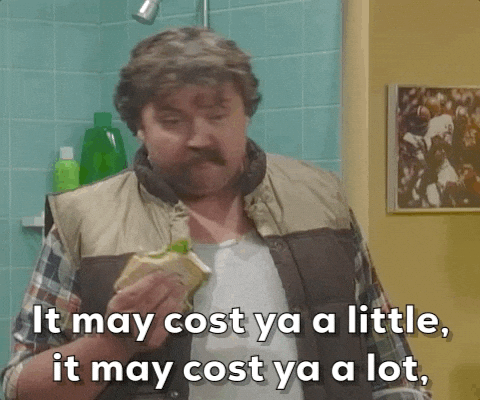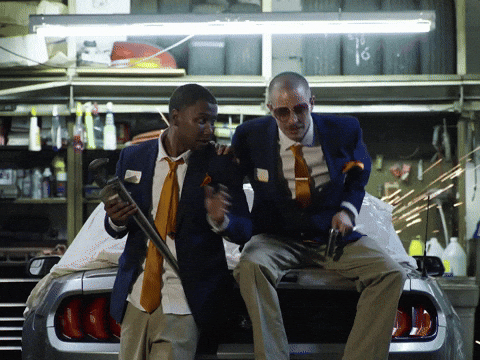The average collision repair cost can vary a lot and can cost as little as $50 or as much as $2,500 or more. This is because it depends on the severity and location of damage, type of care, parts required, the auto body repair shop you choose, and other factors.

Over the last 10 years, StormWise has seen vehicle repairs of all magnitudes, and our experts know exactly how to give an accurate quote. We put together all the information you’ll ever need about collision repair costs. That way, you can determine how much your collision repair process should cost so you never overpay.
Keep reading to learn the estimated prices for different types of damages, factors that affect repair prices, how to save money on collision repairs, and more.
Estimated Collision Repair Costs by Damage Location:

Since the average estimate price differs a lot depending on where the dents and damage are located, we divided up the average price based on the location of the body damage.
| Type of Repair | Repair Cost | Factors that Affect Cost | Lower-end example | Higher-end example |
| Minor Scratches repair | $150 – $2,000 | The main factor is whether or not it’s into just the clear coat or the paint. Severity and location of the scratch on the panel and if it’s close to an adjacent panel that will need to have paint blended, age of the car & existing paint quality | Bugging out a scuff that’s in the clear coat only. No dent, no paint damage, just buffing a panel. 3 inches or less | Deep scratch into the paint with no dent on a quarter pane. This price would include refinish quarter panel, R&I any adjacent moldings or glass, and blend into the roof rail |
| Cracks Repair | $700 – $2,000 | This requires body & paint work regardless, and the minimum is usually going to run $700 on a single panel. The price increases if the paint has to be blended into 1 or more adjacent panels | Small crack on small panel such as a fender that requires no blending of paint to an adjacent panel | Crack on a roof rail that requires R&I any adjacent moldings or glass, and blend into the quarter panel |
| Dents Repair | $100- $3,000 or more (hail damage can be much more than $3,000) | Size, sharpness, and accessibility of the dent, quality of paint and whether or not there’s damage during the paintless dent repair process | 1 small, dime-sized dent with easy access to the back side of the panel to do paintless dent repair | A large dent that cannot be PDR’ed, perhaps on a door panel that will need to replaced all together and have adjacent panels’ moldings/glass/trim R&I’ed and adjacent panels painted to match as well |
| Car Windshield Repair | $100 – $2,000 | Whether it’s a chip that can be filled or a crack that requires replacement, as well as what other features the windshield includes such as a rain sensor, lane departure alert, heads up display, or be heated | Small rock chip that can be filled | Newer model car with all the features that needs replaced, which could include a rain sensor, lane departure alert, heads up display, sound suppression, a camera, other sensors, or be heated |
| Seat Belt Repair | $200- $3,000 | If the seatbelt needs replaced or if it’s a simple fix, or contains an airbag that has to be re-calibrated and connected | Something like the seatbelt isn’t retracting properly and just needs a few labor hours from a technician to diagnose and repair | A high end seatbelt with airbags included, that needs to be calibrated, and involves a complicated remove and reinstall process |
| Frame Damage Repair | $10,000 – $30,000 | Any collision that includes frame damage is a major repair that likely includes multiple panel replacements, so factors effecting the price will widely include the parts prices and severity of frame damage | 3 panel replacements and paint on older vehicle where aftermarket parts are readily available and the customer requests them | The sky is the limit price-wise on the high end of frame damage repair. On a brand new BMW, Mercedes, or Tesla, parts and panels are extremely expensive and have to be imported from overseas |
| Rear-end Collision Repair | $150 – $10,000 | Whether the paint was damaged, the bumper needs replaced or can be fixed, and any other adjacent panels or frame damage from the collision | No paint damage, light scuff on the bumper that requires buffing only | Frame damage on a newer vehicle would push a tear end collision price upwards of $10,000 or more. Includes multiple panels and parts replacements and frame straightening |
| Front-end Collision Repair | $200 – $10,000 | Same as rear end repair: the main factors are whether the paint was damaged, the bumper needs replaced or can be fixed, if there is damage to the radiator, air conditioning unit, headlights, grill, and any other adjacent panels or frame damage from the collision | No paint damage, light scuff on the front bumper that requires buffing only | Engine work can shoot the price of repair up, as well as parts on higher end, newer vehicles. Front end collisions are typically more costly because of the fact that engine for most cars is under the front hood, which usually crinkles in a front end collision |
| Side Collision Repair | $300 – $10,000 | Factors that effect cost includes if it is light enough for paintless dent repair (which usually side collisions cannot be PDRed), the extent of damage to which ever panel or panels, if there’s damage to the frame or other parts, and the need for additional repairs to doors, windows, or wheels | Very light hit into a door where the dent is less than 4 inches in diameter, can be fixed with easy access to the back side of the panel, and required no paint work | Multiple doors effected in the crash, needing to replace the doors and then blend the paint into quarter panel, fender, and roof rail, potential interior trim damage, glass replacement |
| Full Bumper Replacement | $700 – $3,000 | Type of bumper material, make and model of the car (newer parts are more expensive), availability and customer willingness to use aftermarket parts, extent of damage to other components such as sensors in the bumper | An aftermarket bumper replacement on an older vehicle | A newer import bumper replacement with a 3-stage Pearl coat, sensors for adaptive cruise control, proximity sensors, a fog lights all needing replaced and calibrated |
Collision Repair Costs by Type

Rear-end Collision Repair Cost
Rear-end damage includes the rear bumper, trunk or tailgate, exhaust system, frame or structural components, and tail lights or backup lights. This most commonly occurs when getting hit from behind, which means there’s a decent chance you aren’t the at-fault driver which means the other driver’s insurance company should cover the cost of repairs. The average cost of rear-end collision lands between $300 and $2,000 as long as the frame isn’t bent.

Front-end Collision Repair Cost
Front-end body work usually requires repair on the front bumper, fenders, headlights, grille, headlights, radiator, and hood. It can also include windshield replacement or mechanical repairs depending on the extent of the damage after a car accident. Front collision repair cost usually lies between $200 and $1,500, but it can be more if there’s damage to the components under the hood.

Side Collision Repair Cost
Side collisions can damage the doors, side panels, fender, hood, windshield, suspension system, subframe, roof, wheels and tires, windows, and side airbags. In general, side collisions are more expensive than front or rear-end collision repair cost examples. We estimate average collision repair costs for side collisions to be between $500 and $3,000.

Got collision damage on your bumpers? Learn more about the cost of bumper dent repair.
Find out the Cost of your Collision Repair – Get your Free Estimate within an hour.
Common Factors that Affect Collision Repair Costs

As you can see, car repair costs can vary a lot depending on many different factors including the type of car, severity of the damage, parts required, and labor costs. Let’s look at how these different factors influence the amount you will have to pay at the auto body shop.
Type of Car
Repair estimates can change depending on the make and model of your vehicle. One reason for this is the fact that aftermarket parts for a common type of vehicle will be cheaper than luxury or rare cars. In addition, different vehicles are made from different materials which can impact the price. Finally, if you have a newer car, you may have comprehensive coverage under your warranty.
Severity of the Damage
As you probably guessed, minor damage, like dents or paint scratches, is less expensive than severe damage like suspension damage, windshield replacement, bent frames, and other serious issues. Serious damage requires paying for more parts, higher labor costs, and more significant repair services.
Parts Required for the Repair
The parts needed to repair the damage can greatly impact auto body repair costs. If you need a windshield replacement or aftermarket doors, then you will pay much more than you will for simple bumper repair and dent removal. In addition, this includes the type of paint damage because a common color will be easier, and cheaper, to find than one with a custom paint job that requires color matching.
Labor costs
Labor costs can be costly, but also depend on where you choose for your repairs. For example, the labor costs at a dealership will likely be greater than you would pay at a dedicated collision center. This, in turn, changes the average collision repair cost. However, do not simply choose the cheapest option if it means sacrificing the quality of work.
Other Cost Considerations

In addition to the common factors that affect collision repair prices, there are other considerations like car insurance coverage, rental car expenses, and the collision repair shop you choose.
Collision Insurance
If you have an insurance policy that covers your damage, then you may want to consider using it. However, you may also want to consider your deductible, potentially higher premiums, and frequency of insurance claims before deciding if this is the best option for your situation. Minor auto body repairs like dent removal or touch-up scratch repair may cost less out-of-pocket than going through your insurance provider.
Car Collision Repair Shop
Choosing a reputable car collision repair shop is important for a couple of reasons. First, they will do good work and offer warranties that ensure you don’t end up adding to the average collision repair cost examples with more body work soon. Second, they will charge you a fair price for the work they complete and will never add on hidden fees. Finally, a reputable car collision repair shop will provide additional cost-saving services like help with auto insurance collision coverage, financing, valet services, and more.
Rental Car Expenses
While your car is in the shop, you will still need to get to and from work and everywhere else. In fact, you may have already paid for a rental car after your accident. While insurance covers this in some cases, it’s an important consideration for determining “how much does collision repair cost?”
StormWise, a trusted auto body shop in Denver for more than 20 years, offers free pickup and drop-off in some areas to drive you home and if not then we’ll give you up to $20 credit for Uber/Lyft. We also cover rental car costs up to $35 per day when your insurance won’t cover that cost. That way, you never have to worry about getting where you need to go without adding to the average collision repair cost.
How to Save Money on Collision Repairs

To make sure you never overpay for collision repairs, here are some tips to save money.
Choose a Reputable Collision Repair Shop
By choosing a reputable auto body shop, you can rest assured knowing your vehicle is cared for and repaired properly. Plus, you’ll never have to worry about being overcharged for work. Reputable experts will do everything they can to save you money on parts and labor costs.
Ask for Discounts
Make sure you ask for potential discounts as well. Some locations will offer discounts for using certain services or financing options. Others may have specials running on certain aftermarket parts or packages.
Call your Insurance Company for Insurance Claims
Before deciding on the cheaper option between insurance or out-of-pocket, make sure you talk to your insurance company. They may be able to save you some money with a different insurance policy or a discount based on the frequency of claims.
Collision Repair Cost FAQs

How long does collision repair take?
Just like the average collision repair cost, the length of time it takes to repair your vehicle can vary a lot. Some repairs will only take a day or two while others can take weeks. Some aftermarket parts can even take longer to get, which pushes back the length of repairs even more.
At what point is it too expensive to repair a car?
If the cost of repairs is 50% or more of the current market value, then you may want to consider selling it. However, that’s just a rule of thumb and in some cases, it may still be a good idea to repair it. If you want to know if your car is totaled or learn about your options, StormWise experts are here to help.
What if I can’t afford collision repairs?
You have a couple of options if you can’t afford collision repairs. The first is to try to work something out with your insurance company or auto repair shop. You may be able to work out a monthly payment instead of paying all at once. Another option is to sell your vehicle as-is. Finally, you can save up for a while before getting the vehicle repaired.
What happens if an estimate is higher than insurance coverage?
If you receive an estimate that is higher than the insurance company’s estimate, then you may have to pay the difference. However, StormWise will do what we can to resolve differences like this by contacting y our insurance company directly for any additional funds.
Get back on the road quickly – Schedule your Free Estimate










 Auto hail
repair
Auto hail
repair
 Hail
damage cost calculator
Hail
damage cost calculator  Before/After
Before/After
 PDR cost
101
PDR cost
101
 About
StormWise
About
StormWise
 reviews
reviews  Articles
Articles  FAQs
FAQs
 resource & contact
resource & contact